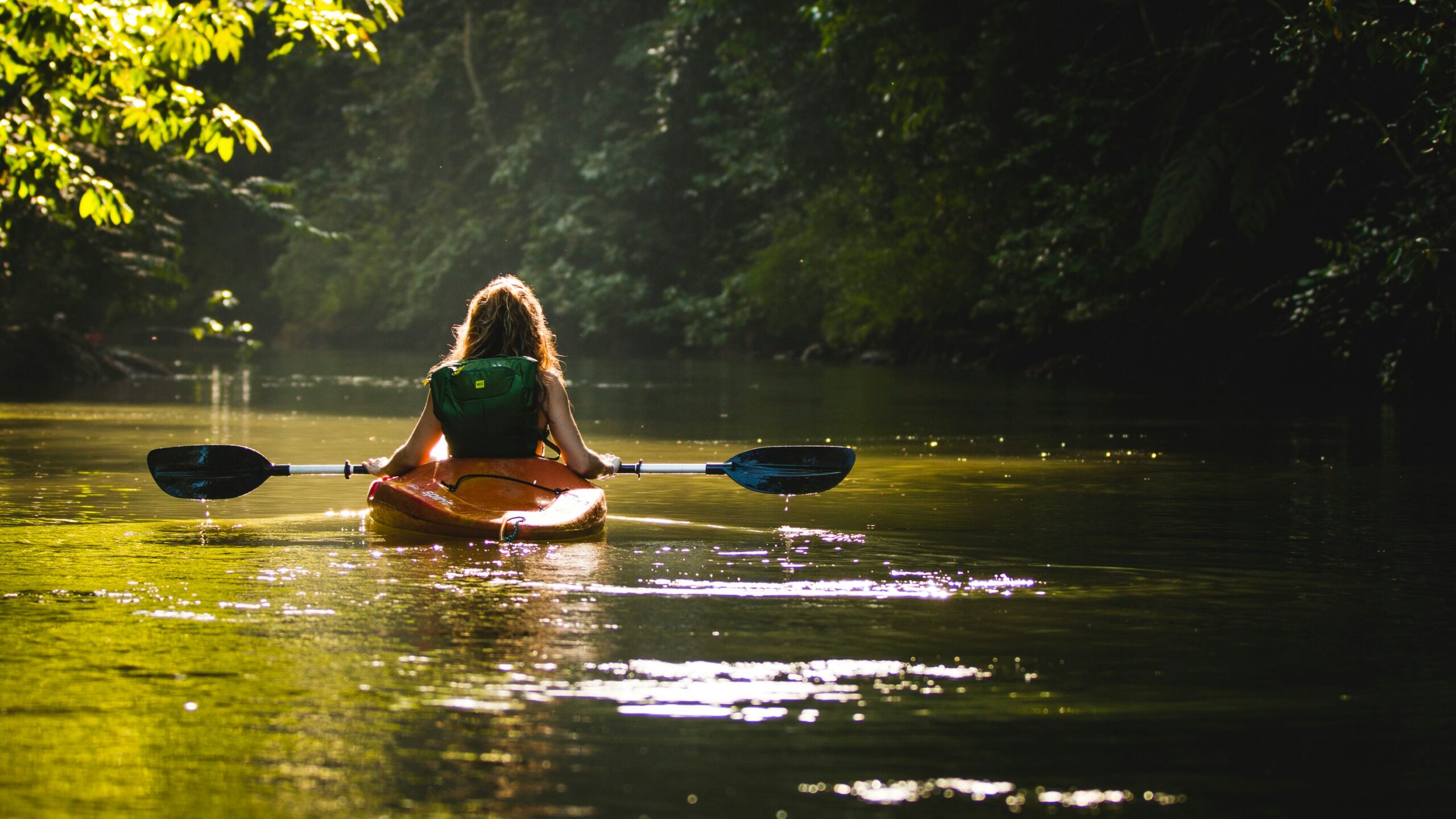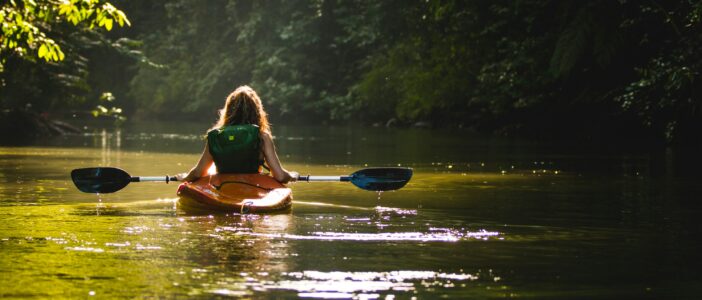Kayaking is an exhilarating water sport that offers a unique way to explore rivers, lakes, and oceans while enjoying the beauty of nature. Whether you’re seeking a leisurely paddle along calm waters or an adrenaline-fueled adventure navigating through rapids, kayaking has something to offer for everyone. If you’re new to kayaking and eager to get started, this comprehensive guide will provide you with the essential information and tips to embark on your kayaking journey with confidence.
Kayaking in ireland
Kayaking is a fantastic way to explore the beautiful coastlines and rivers of Ireland. With its rugged coastline, pristine lakes, and rushing rivers, there are plenty of great kayaking locations to choose from. Here are just a few of the many amazing kayaking spots in Ireland.
The River Shannon is one of the longest rivers in Ireland and offers a variety of kayaking experiences. For a tranquil paddle, head to the Upper Shannon, where you’ll pass through picturesque countryside and small towns. If you’re up for a challenge, try the Lower Shannon, which has rapids and weirs that will test your skills.
Another great kayaking location is the Lakes of Killarney in County Kerry. The three lakes – Lough Leane, Muckross Lake, and Upper Lake – are surrounded by stunning mountains and offer plenty of opportunities for exploration. Paddle through calm waters and spot wildlife, such as otters and herons.
For those looking for a coastal kayaking experience, head to the Dingle Peninsula in County Kerry. The rugged coastline and crystal-clear waters make for a stunning paddle. Keep an eye out for dolphins and seals, which are often spotted in the area.
In County Galway, the Connemara National Park offers a unique kayaking experience. Paddle through the park’s stunning lakes, such as Lough Inagh and Lough Fee, which are surrounded by majestic mountains. The park also offers guided kayaking tours, where you can learn about the area’s history and wildlife.
Finally, County Donegal’s Gweebarra Bay offers a secluded and peaceful kayaking experience. Paddle through calm waters and take in the stunning views of the bay and surrounding mountains.
In conclusion, Ireland offers a variety of amazing kayaking locations. From the tranquil River Shannon to the rugged coastline of the Dingle Peninsula, there is something for every level of kayaker. So grab your kayak, explore the beauty of Ireland’s waterways, and create unforgettable memories.
Exploring the coast of Ireland by Kayak
reland is a country that is surrounded by stunning coastlines and waterways, making it an ideal destination for sea kayaking enthusiasts. With its dramatic cliffs, sheltered bays, and picturesque islands, Ireland has a range of seakayaking locations that are sure to impress.
One of the most popular sea kayaking locations in Ireland is the Wild Atlantic Way, a 2,500km route that stretches along the west coast of the country. The route is dotted with secluded coves, rocky headlands, and breathtaking scenery, making it an ideal location for sea kayaking adventures.
Another great seakayaking location in Ireland is the Skellig Islands, located off the coast of County Kerry. These islands are home to an impressive array of marine life, including seals, dolphins, and whales, and offer stunning views of the Atlantic Ocean.
For those seeking a more tranquil seakayaking experience, Lough Corrib in County Galway is a great option. The lake is the second-largest in Ireland and offers calm waters surrounded by scenic countryside.
Further north, the Causeway Coast in Northern Ireland offers a unique seakayaking experience, with its rugged cliffs and sea caves providing an unforgettable backdrop to your adventure.
Finally, the Aran Islands, located off the coast of County Galway, are a must-visit destination for seakayaking enthusiasts. The islands offer a unique cultural experience, with traditional Irish music, language, and customs still very much alive.
Getting Started: Choosing the Right Kayak
Types of Kayaks
Before diving into the world of kayaking, it’s crucial to understand the different types of kayaks available and their intended purposes. The two primary categories of kayaks are:
Recreational Kayaks
Recreational kayaks are ideal for beginners as they offer stability and easy maneuverability on calm waters such as lakes and slow-moving rivers. These kayaks typically have a wide, flat hull, providing a stable platform for paddlers.
Sea/Touring Kayaks
Sea or touring kayaks are designed for more experienced paddlers and are well-suited for longer excursions on open water, such as coastal areas and large lakes. They feature a sleeker design with a narrower hull, allowing for greater speed and efficiency in the water.
Choosing the Right Size
When selecting a kayak, consider factors such as your height, weight, and intended use. Ensure that the kayak is comfortable and provides adequate support for your body type. Most kayaks come in various sizes, so it’s essential to test different models to find the one that best fits your needs.
Essential Gear and Equipment
Paddle
A high-quality paddle is essential for efficient and enjoyable kayaking. When choosing a paddle, consider factors such as length, blade shape, and material. Opt for a paddle with an appropriate length based on your height and the width of your kayak. Additionally, lightweight materials such as fiberglass or carbon fiber can reduce fatigue during long paddling sessions.
Personal Flotation Device (PFD)
A PFD is a critical piece of safety equipment that should be worn at all times while kayaking. Choose a PFD that is specifically designed for paddling activities and ensures a snug and comfortable fit. In the event of an emergency, a PFD can provide buoyancy and potentially save your life.
Safety Gear
In addition to a PFD, other essential safety gear includes a whistle or signaling device, a bilge pump or sponge for bailing out water, and a safety leash to keep your paddle attached to your kayak in case of capsizing.
Clothing
Dress appropriately for the weather conditions and water temperature. Wear quick-drying clothing and consider layering to regulate your body temperature. Additionally, invest in a waterproof dry bag to keep essential items such as keys, snacks, and a cell phone dry and secure.
Learning the Basics: Paddling Techniques
Sitting Position
When seated in your kayak, maintain an upright posture with your back supported by the seatback. Keep your knees slightly bent and your feet resting comfortably on the footpegs or foot braces.
Gripping the Paddle
Hold the paddle with a relaxed grip, ensuring that your hands are spaced shoulder-width apart. The concave side of the paddle blade should be facing you, with the blade positioned perpendicular to the water.
Forward Stroke
The forward stroke is the most fundamental paddling technique used to propel the kayak forward. To execute a forward stroke, immerse the paddle blade fully in the water near your feet and pull it back in a straight line alongside the kayak, rotating your torso for added power.
Turning
To turn your kayak, use a combination of forward and backward strokes on either side of the kayak. For a sharper turn, employ a sweep stroke by starting with the paddle blade near the bow of the kayak and sweeping it outward in a wide arc.
Bracing
Bracing techniques are essential for maintaining stability and preventing capsizing. Practice low and high braces by leaning your body to one side while simultaneously placing the paddle blade in the water to support your weight.
Safety Tips for Beginners
Learn to Swim
Before embarking on your kayaking adventures, ensure that you are proficient in swimming and comfortable in the water. Familiarize yourself with basic water safety techniques, such as treading water and floating, to stay safe in case of an emergency.
Check Weather Conditions
Always check the weather forecast and water conditions before heading out on the water. Avoid kayaking in inclement weather or rough seas, as strong winds and currents can pose significant risks to inexperienced paddlers.
Buddy System
Whenever possible, kayak with a companion or in a group. The buddy system provides an additional layer of safety and ensures that someone is available to assist in case of an emergency.
Practice Self-Rescue Techniques
It’s essential to practice self-rescue techniques such as re-entering your kayak after capsizing and performing assisted rescues with a partner. Familiarize yourself with different rescue methods and practice them in controlled environments before venturing into more challenging waters.
Navigate the Waters: FAQs for Kayaking Enthusiasts
Learn about common questions on kayaking
[helpie_faq show_title=”1″ title=”Kayaking FAQ” title_tag=”h3″ show_search=”1″ search_placeholder=”Search FAQ” search_by_tags=”1″ exclude_from_search=”1″ display_mode=”simple_accordion” toggle=”1″ open_by_default=”open_first” faq_url_attribute=”1″ faq_url_type=”post_id” display_mode_group_by=”category” display_mode_group_container=”accordion” sortby=”publish” order=”desc” category_sortby=”publish” category_order=”desc” limit=”-1″ enable_content_hooks=”1″ enable_schema=”1″ onload_scrollto_delay=”0″ categories=”239,238,237,235,190″]
